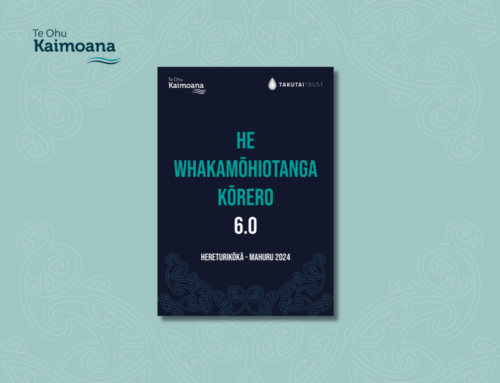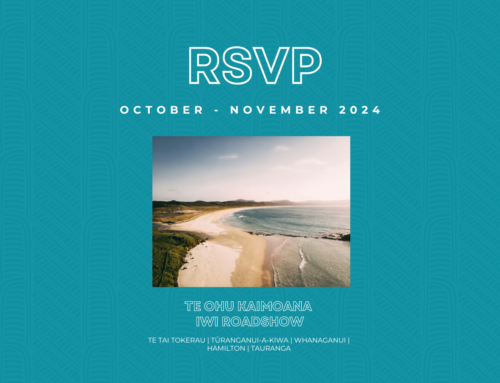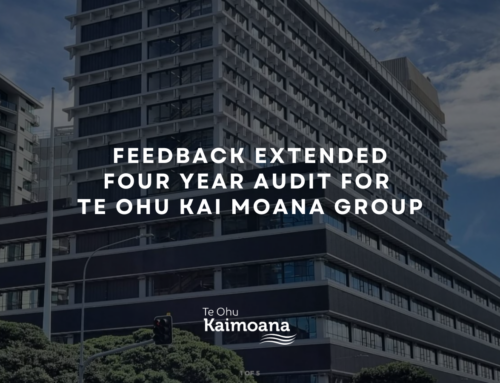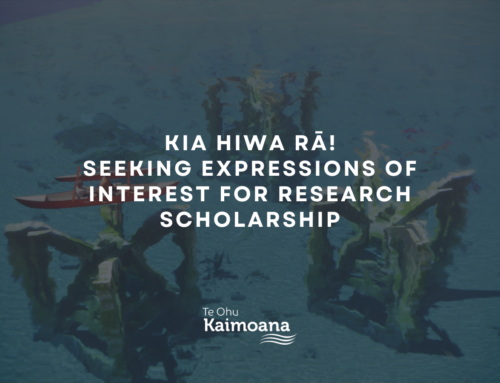Moana New Zealand and Te Ohu Kaimoana support today’s announcement by Prime Minister Rt Hon Jacinda Ardern and Minister for Fisheries Hon Stuart Nash, on the implementation of cameras on vessels in the known Maui dolphin habitat on the West Coast of the North Island.
Māori are well versed in the responsibilities and duties required to fulfil their obligations as kaitiaki for the betterment of Tangaroa, and while the last recorded fatality of a Māui dolphin attributed to the commercial fishing industry took place in 2002, that’s a statistic that 100% Māori owned Moana New Zealand wants to remain unchanged. Fit for purpose cameras will be one piece in the complex puzzle humanity has to solve to extinguish the many threats faced by Māui dolphins.
“We are constantly working to mitigate the risk of marine mammal by-catch alongside our contract fishers. For over five years we have been trialling cameras on trawl vessels which finished in October, but our contract fishers have continued to use cameras on their vessels voluntarily, among a range of other measures.”
“We have three contract fishing vessels operating within the affected zone on the West Coast of the North Island, and each of these vessels have cameras on board. We aren’t acting alone though and recognise Sanford for the great work they are also doing in this space,” says Steve Tarrant, Chief Executive of Moana New Zealand.
The innovation continues as companies are currently trialling underwater cameras and release at depth technology. Moana New Zealand alongside the Ministry for Primary Industries (MPI), the Sealord Group and Sanford Limited have been a part of the $48 million, seven-year Precision Seafood Harvesting (PSH) trial that has seen the development of a new fishing technology based on science from Plant & Food Research. This involves low velocity harvesting systems (MHS) that provide an alternative future fishing method for many New Zealand fish species that also supports the sustainability of our fish stocks and protects marine mammals.
A communication link within these new designs is being trialled to monitor the in-trawl environment in real time, for the presence of marine mammals. This same linkage could be used to activate a release mechanism, which will increase the likelihood of survival if any marine mammals are caught. This innovation could be a real game changer when it comes to protecting marine mammals in the future and we encourage the government to support our innovation in this space.
Te Ohu Kaimoana Chief Executive Dion Tuuta supports Moana New Zealand’s investment into improving fishing practice. “Our right to benefit from Tangaroa is underpinned by our obligation to tiaki or nurture Tangaroa and all marine biodiversity. Moana have demonstrated this in the actions they have taken over the past four years. I’m sure all operators in this area are keen to work together for the betterment of Māui dolphins and Tangaroa generally.”
A risk assessment by Fisheries New Zealand estimates populations are 15,782 for Hector’s dolphins and 63 for adult Māui dolphins. A recent study led by NIWA scientist Dr Jim Roberts has examined threats facing Hector’s and Māui dolphins. The study acknowledges the threat presented by fishing, but also concludes that the importance of non-fishery effects has been previously underestimated. For example, 55 beach cast dolphins (recovered since 2007) were diagnosed with toxoplamsmosis suggesting it is the leading non-fishery cause of death for these dolphins. While not all dolphins are recovered to include in the study, this research has provided better understanding of the relative threats to Māui and Hector’s.
The Moana New Zealand and Sanford Māui Dolphin Protection Plan can be viewed here.





